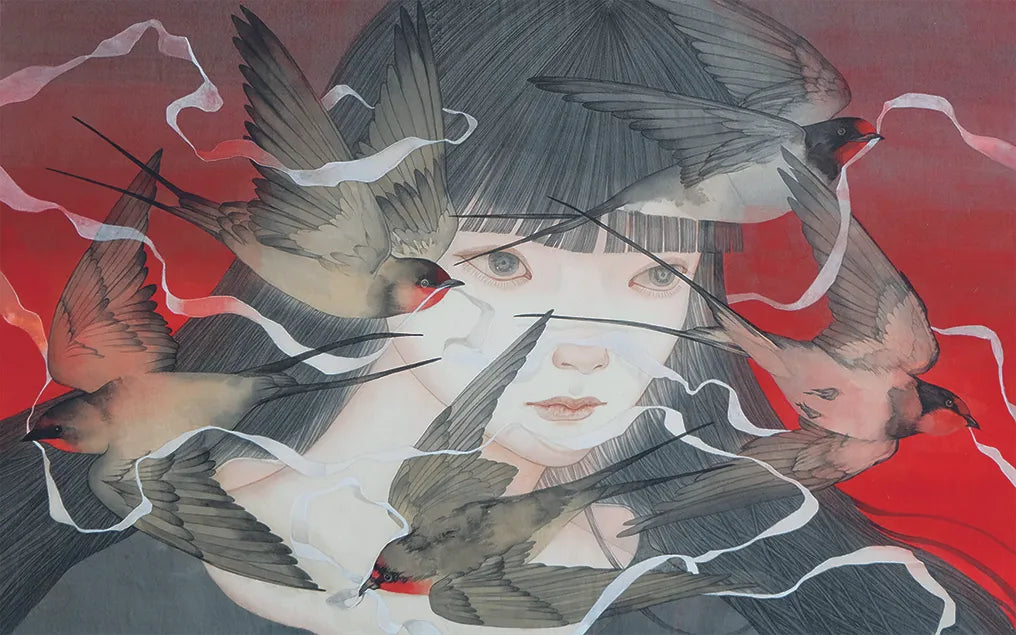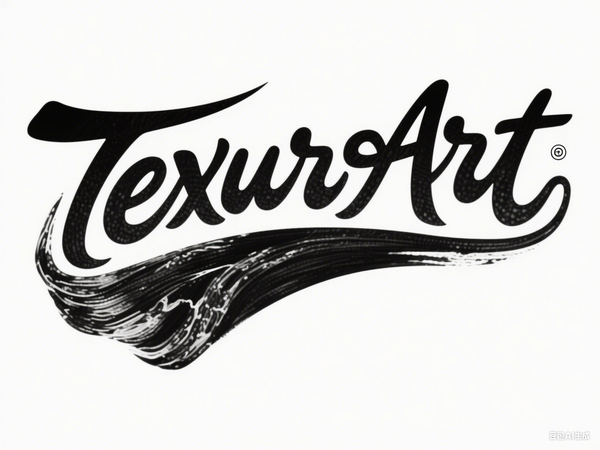
Embracing Nihonga - The Art and Vision of Yuka Sakuma
Share
Yuka Sakuma, a talented painter and illustrator from Nagoya, Japan, draws profound inspiration from the traditional Japanese painting style known as nihonga. This centuries-old technique, characterized by the use of natural mineral pigments and silk or mulberry paper, shapes the core of her evocative and dreamlike portraits that explore themes of empathy and emotional healing. By blending nihonga traditions with modern sensibilities, Sakuma creates artworks that resonate deeply with both Japanese cultural heritage and contemporary art lovers worldwide.

Sakuma’s journey began with a strong influence from childhood experiences with manga and anime, two iconic cultural pillars in Japan. The distinct linework, stark contrast of black and white, and character-driven visual narratives of manga enriched her artistic foundation. This unique fusion allows her to reinterpret the classical nihonga style while incorporating the expressive storytelling aspects found in manga, thus producing a compelling visual language. Those interested in traditional art techniques may find nihonga painting an especially fascinating subject for its intricate process and materials.
Nihonga itself is a meticulous art form that relies on minerals, shells, and stones crushed into fine pigments, mixed with animal glue (nikawa), and applied to absorbent surfaces like mulberry paper. The technique emphasizes layering translucent color, subtle gradations, and delicate brushstrokes. Sakuma employs methods such as tarashikomi, a wet-on-wet pigment technique, to produce soft color bleeds and atmospheric depth, lending an ethereal quality to her paintings. Her work also recalls the historic bijin-ga tradition of ukiyo-e, famous portraits that celebrate feminine beauty and grace in Japanese art.

Sakuma’s art expresses a tender empathy toward her subjects, often young girls, with the aim of visually "removing the anguish" they may carry. This thematic focus reflects a deeply personal connection and intention behind her work, transcending simple portraiture to become an emotional sanctuary. The juxtaposition of modern manga influence and timeless nihonga techniques reveals how traditional styles can evolve in contemporary contexts. For a broader understanding of the layered techniques Sakuma uses, resources on Japanese painting materials offer valuable insights.

The evolving art landscape, amplified by social networking platforms, has allowed artists like Sakuma to reach international audiences far beyond geographical and linguistic boundaries. This connectivity places greater value on an artist’s personality and online presence, alongside their technical skills, creating new possibilities for cultural exchange and recognition. In this interconnected era, the appeal of traditional forms like nihonga can be reimagined and appreciated anew by a global audience, bridging past and present.

Related Image Sources and Anchored Keywords:
-
The refined layering of mineral pigments in nihonga paintings
-
Classic examples of bijin-ga portraits from ukiyo-e collections
-
Visual explanation of the tarashikomi technique
-
Materials essential to nihonga, including natural pigments and nikawa
-
Contemporary interpretations of Japanese art inspired by manga
FAQs
Q1: What defines the nihonga painting style?
Nihonga is defined by its use of natural mineral pigments, traditional binders like nikawa, and absorbent supports such as mulberry paper, emphasizing delicate brushwork and translucent layers.
Q2: How does Yuka Sakuma integrate manga influences in her nihonga work?
She combines manga’s bold linework and narrative sensitivity with the refined materials and layering techniques of nihonga to produce emotionally evocative contemporary portraits.
Q3: Which materials are commonly used in nihonga?
Common materials include mineral pigments derived from shells and stones, animal glue (nikawa) as a binder, mulberry paper or silk as the painting surface, and occasionally gold or silver leaf for accents.
Q4: What traditional painting techniques are characteristic of nihonga?
Techniques such as tarashikomi create soft, flowing color effects; bokashi produces gradations; and mokkotsu allows painting without outlines, all emphasizing subtlety and refinement.
Q5: How has modern technology impacted artists like Sakuma?
The digital age and social media platforms have enhanced global visibility for artists, emphasizing personal expression and direct audience engagement beyond traditional art market boundaries.
Q6: What themes dominate Yuka Sakuma’s artwork?
Her work centers on empathy, emotional healing, and celebrating feminine beauty, reflecting the historic bijin-ga style while incorporating contemporary emotional depth.
Yuka Sakuma’s seamless blend of classical nihonga techniques with contemporary influences highlights the enduring power of traditional art forms to tell new stories. Her paintings offer visual solace and beauty, inviting viewers into a world where history and emotion intertwine gracefully.
